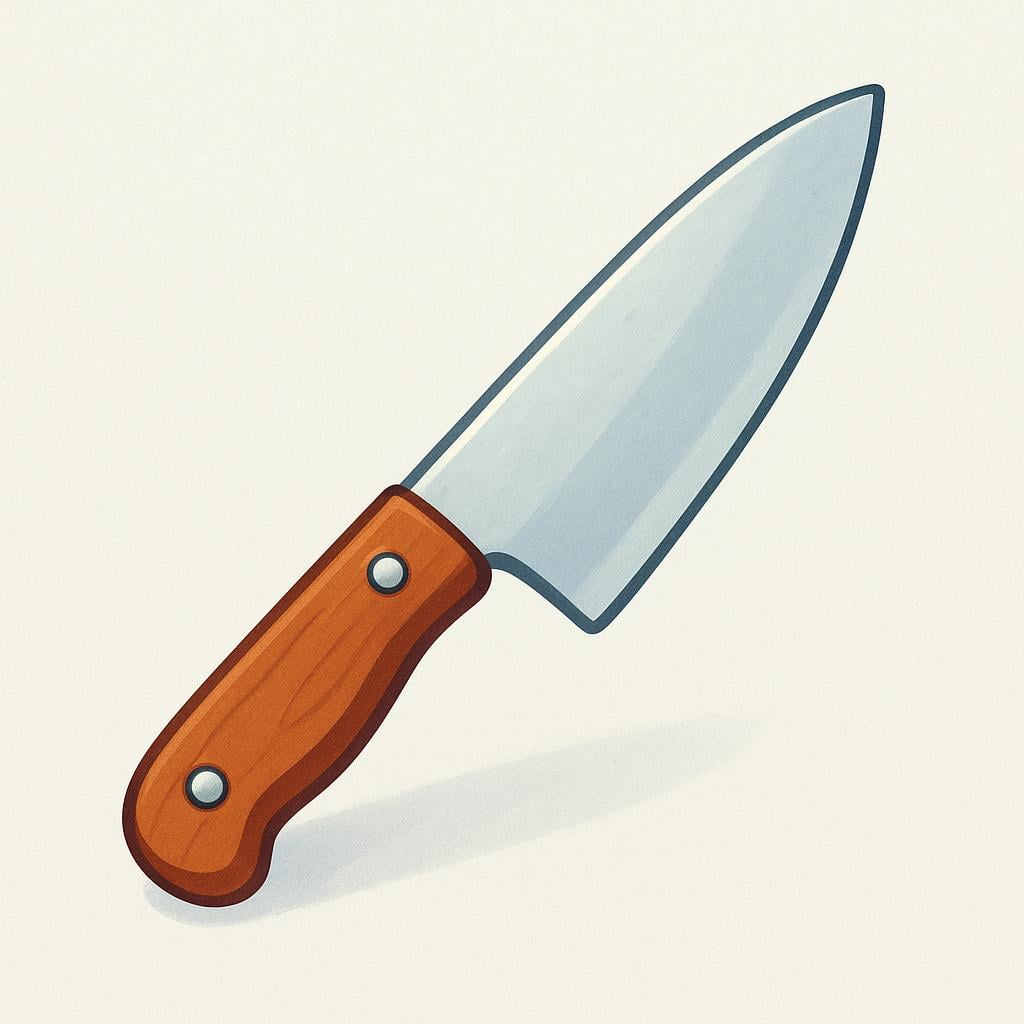
cuchillo
koo-CHEE-yo
📝 In Action
¿Puedes pasarme el cuchillo para cortar el pan?
A1Can you pass me the knife to cut the bread?
El chef afila su cuchillo antes de empezar a cocinar.
A2The chef sharpens his knife before starting to cook.
Ten cuidado, ese cuchillo es muy viejo y no tiene mango.
B1Be careful, that knife is very old and doesn't have a handle.
💡 Grammar Points
Identifying Gender
'Cuchillo' ends in '-o', which is the most common pattern for masculine words. Always pair it with 'el' (the) or 'un' (a).
❌ Common Pitfalls
Using the Wrong Article
Mistake: "Saying 'La cuchillo' when asking for the knife."
Correction: Since it's masculine, you must say 'El cuchillo' or 'Un cuchillo'. Remember: 'el' for knife, 'la' for spoon ('cuchara').
⭐ Usage Tips
Asking for Cutlery
If you need the full set of knife, fork, and spoon, it's more common and faster to ask for 'los cubiertos' (the cutlery/silverware).
✏️ Quick Practice
💡 Quick Quiz: cuchillo
Question 1 of 2
If you want to cut a piece of cake, what do you ask for?
📚 More Resources
Frequently Asked Questions
How do I pronounce the 'll' in 'cuchillo'?
Depending on where the speaker is from, the 'll' sound can be pronounced like the 'y' in 'yes' (this is very common) or, less often, like the 'li' in 'million'.
Is it rude to ask for 'un cuchillo' at a restaurant?
No, it is perfectly polite and common. If your table setting is missing one, simply ask: '¿Me trae un cuchillo, por favor?' (Could you bring me a knife, please?)